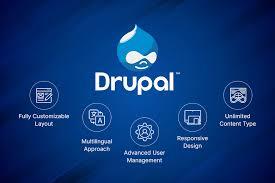Outsourced vs. In-House NOC for MSPs: What’s Right for Your Growth?
Choosing Between In-House and Outsourced NOC Services to Future-Proof Your MSP
Introduction
As Managed Service Providers (MSPs) scale their business to meet increasing client demands, the Network Operations Center (NOC) becomes a vital pillar of service delivery. However, one of the most strategic decisions MSPs face is whether to build and manage an in-house NOC or partner with a provider that offers outsourced NOC services.
This decision can have a significant impact on your operational efficiency, customer satisfaction, profitability, and growth potential. In this guide, we’ll break down the differences between outsourced and in-house NOC models, compare their benefits, costs, and long-term impacts, and help you determine which approach aligns best with your MSP’s growth trajectory.
What Is an Outsourced NOC?
An outsourced NOC (Network Operations Center) refers to a third-party service provider that manages, monitors, and supports IT infrastructure on behalf of MSPs. These NOC partners operate 24/7, offering a range of services including:
-
Real-time monitoring of networks and systems
-
Ticketing, triaging, and escalation
-
Incident resolution and alert management
-
Proactive maintenance and patch management
-
Remote support for servers, routers, firewalls, and endpoints
Outsourced NOC services act as an extension of your MSP, enabling you to deliver uninterrupted support to clients while reducing the operational burden on your internal team.
Benefits of an Outsourced NOC
For many MSPs—especially those aiming for rapid growth—outsourcing NOC operations provides multiple competitive advantages. Here’s a deeper dive into the top benefits:
1. Operational Maturity and Access to Expertise
Outsourced NOC providers specialize in infrastructure monitoring and remediation. Their technicians are certified, experienced, and trained across multiple platforms (Windows, Linux, Cisco, VMware, etc.). By partnering with them, your MSP gains:
-
Immediate access to Level 1, 2, and 3 support
-
Mature SOPs, SLAs, and incident response protocols
-
Global time-zone coverage without requiring shift-based hiring
-
Rapid adoption of best practices and compliance standards
Rather than spending months or years building this capability internally, outsourced partners deliver it from day one.
2. Relative Costs
Cost is often the primary driver for outsourcing, and rightly so. Building a 24/7 in-house NOC involves:
-
Hiring multiple shifts of skilled technicians
-
Ongoing training and certifications
-
Investing in monitoring software (RMMs, ticketing tools, analytics)
-
Infrastructure costs: office space, power, redundancy, etc.
-
Management overhead for NOC leads, quality control, and escalation handling
On the other hand, outsourced NOC services typically follow a subscription or pay-per-device model. This makes costs predictable, scalable, and aligned with your revenue model. You only pay for what you need—freeing up cash flow for sales, onboarding, or client acquisition.
3. Speed to Service
Time is money—especially in a competitive MSP landscape. Setting up an internal NOC from scratch can take 6–12 months or more. Hiring, training, tool setup, and process building all take significant time.
With outsourced NOC services, you can be up and running in as little as 1–2 weeks. Many white-label NOC partners offer plug-and-play onboarding, templated SLAs, and ready-to-go integrations with your existing PSA or RMM tools.
This speed-to-service means:
-
Faster time-to-market with new services
-
Quicker onboarding for new clients
-
Ability to scale support without delays
4. Technology That Actually Makes a Difference
Leading NOC providers invest in state-of-the-art monitoring and automation platforms—many of which MSPs cannot afford independently. These include:
-
AI-powered alerting and remediation
-
Predictive analytics for system health
-
Patch management and compliance tools
-
Integrations with ConnectWise, Kaseya, Atera, and more
This technology ensures higher uptime, fewer false positives, and better performance metrics—benefits that directly impact your SLAs and client satisfaction.
5. Service Levels That Actually Mean Something
When you outsource to a professional NOC provider, SLAs are not just theoretical—they’re contractually enforced and monitored. Quality-focused outsourced NOC services will provide:
-
Response time guarantees
-
Escalation matrix transparency
-
Real-time reporting and dashboards
-
Root cause analysis and proactive improvements
In contrast, managing SLAs in-house—especially across night shifts or holidays—often leads to gaps or inconsistencies. Outsourcing ensures that your clients receive consistent support regardless of the time of day.
How to Choose an Outsourced NOC Provider
Not all outsourced NOC providers are created equal. Choosing the right partner can make or break your MSP’s success. Here are some key considerations:
1. White-Label Support Capabilities
Ensure the NOC provider offers fully white-labeled support, so your brand remains front and center with your clients.
2. 24/7/365 Availability
Your clients expect 24/7 support. Make sure the provider offers round-the-clock monitoring and support—including holidays.
3. Integration with Your Tools
Check whether they can integrate with your existing RMM, PSA, and ticketing systems. Smooth integrations save time and reduce complexity.
4. Security and Compliance
Verify that the provider follows best practices for data security, remote access, and compliance (SOC 2, HIPAA, GDPR, etc.).
5. SLA Guarantees and Escalation Paths
Request documentation on response/resolution times, escalation tiers, and ticket workflows to ensure SLA adherence.
6. Technical Expertise
Look for certifications (CompTIA, Microsoft, Cisco, etc.), as well as hands-on experience with the platforms your clients use.
7. Reporting and Communication
A quality provider should offer regular performance reports, real-time dashboards, and dedicated points of contact for escalations.
Factors to Consider When Choosing a Model
Still not sure whether in-house or outsourced is right for your MSP? Let’s compare both models side-by-side:
| Criteria | In-House NOC | Outsourced NOC Services |
|---|---|---|
| Setup Time | 6–12 months | 1–2 weeks |
| Cost | High upfront & ongoing | Monthly, predictable subscription |
| Scalability | Limited by team size | Instantly scalable |
| Expertise | Varies by hire | Certified specialists available |
| 24/7 Coverage | Costly shift management | Included |
| Technology Access | Requires separate investment | Included with service |
| SLAs & Reporting | Custom-built, may lack rigor | Built-in, well-documented |
| Branding (White-Label) | Internal branding only | Fully white-labeled options |
| Control | Full control | Shared control |
Verdict:
-
Choose In-House NOC if you need full control and have long-term staffing and capital resources.
-
Choose Outsourced NOC if you want speed, flexibility, and cost-efficiency while maintaining service quality.
The Bottom Line
In today’s competitive MSP market, client expectations are rising. Fast response times, 24/7 coverage, and expert support are now table stakes. Choosing between an in-house or outsourced NOC isn’t just a cost decision—it’s a strategic one.
Outsourced NOC services can help MSPs:
-
Grow faster without overburdening internal teams
-
Deliver consistent client experiences day and night
-
Improve margins and reduce operational complexity
-
Expand geographic coverage without hiring globally
-
Access the latest tools and tech without upfront costs
While in-house models offer more control, they’re often less scalable, more expensive, and slower to deploy. If your MSP is focused on growth, agility, and profit—outsourcing your NOC may be the smartest move you make this year.
Frequently Asked Questions
1. Is outsourcing my NOC a security risk?
Not if you choose the right partner. Look for NOC providers that follow industry best practices for encryption, access control, and compliance certifications (SOC 2, ISO 27001, HIPAA, etc.).
2. Will my clients know I’m using an outsourced NOC?
Not necessarily. Many outsourced NOC services are white-labeled, meaning they operate under your brand with customized email addresses, phone greetings, and ticketing systems.
3. How much does an outsourced NOC service typically cost?
Pricing depends on the number of devices, servers, and services monitored. Most providers offer per-device or per-user pricing models, which can be more cost-effective than staffing your own NOC.
4. Can I scale services up or down based on my needs?
Yes. One of the major benefits of outsourcing is flexibility. You can scale up during high-demand periods and scale down when needed—without HR headaches.
5. What happens if the outsourced NOC misses a critical alert?
Reputable NOC providers offer SLA-backed services and detailed escalation paths. You can also request real-time monitoring dashboards, daily reports, and post-incident reviews to maintain accountability.
6. Can outsourced NOC teams handle custom environments or tools?
Many NOC providers support custom workflows and have experience with a wide range of environments. Be sure to ask during onboarding whether they can adapt to your client-specific setups.
7. Is it possible to combine both models (hybrid NOC)?
Yes, some MSPs use a hybrid model—keeping Level 3 or strategic services in-house while outsourcing 24/7 monitoring and Level 1/2 tasks. This balances control and cost-efficiency.
Final Thoughts
For MSPs focused on scalability, client satisfaction, and long-term profitability, outsourced NOC services offer unmatched benefits. While building an in-house NOC may suit some mature organizations, outsourcing delivers rapid deployment, expert-level support, and a scalable path to growth without breaking the bank.
The key is to choose the right NOC partner—one that aligns with your values, understands MSP workflows, and helps you deliver consistent, branded experiences to your clients.
Ready to grow without limits? Now might be the perfect time to embrace the power of outsourcing.




